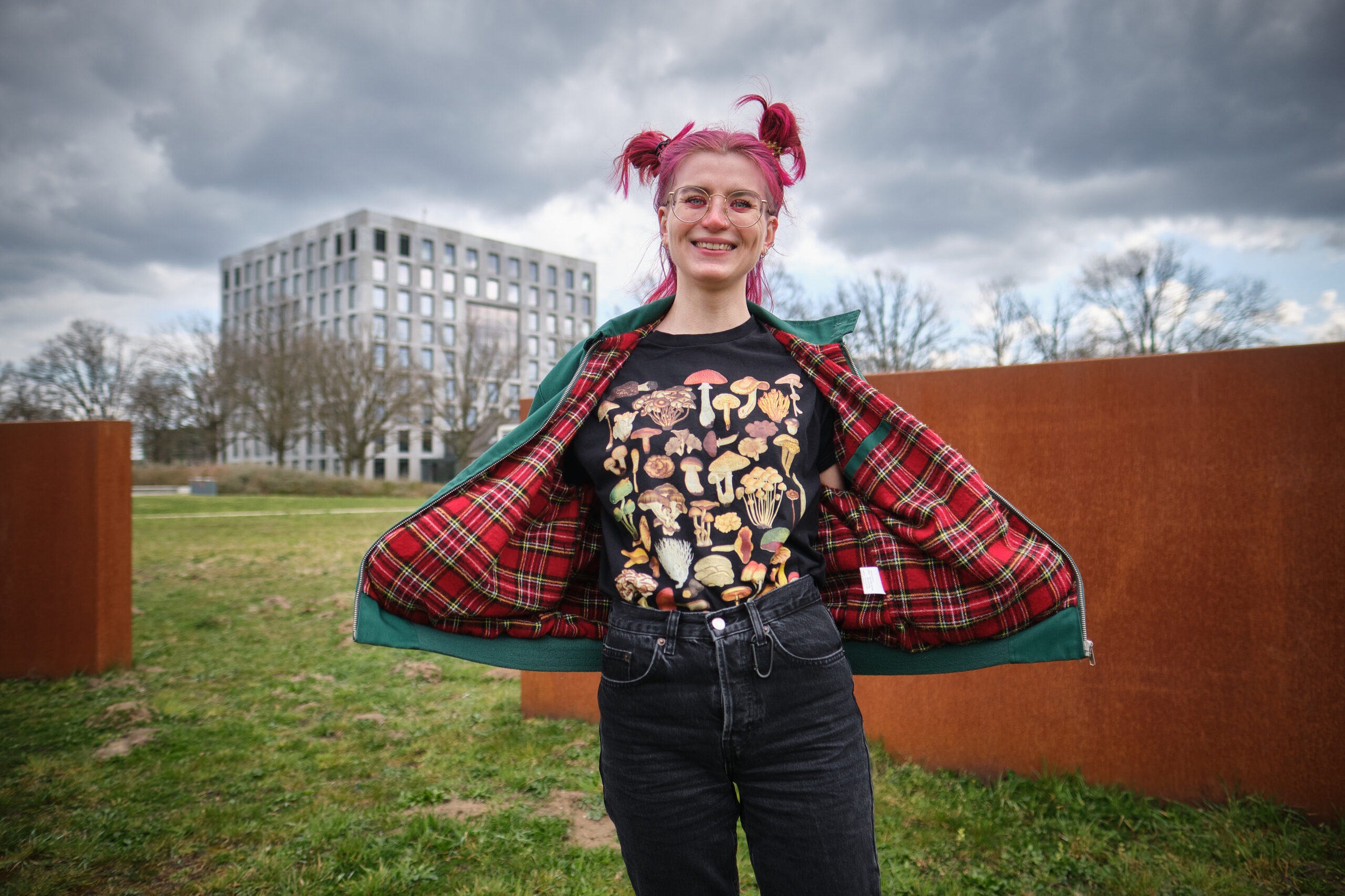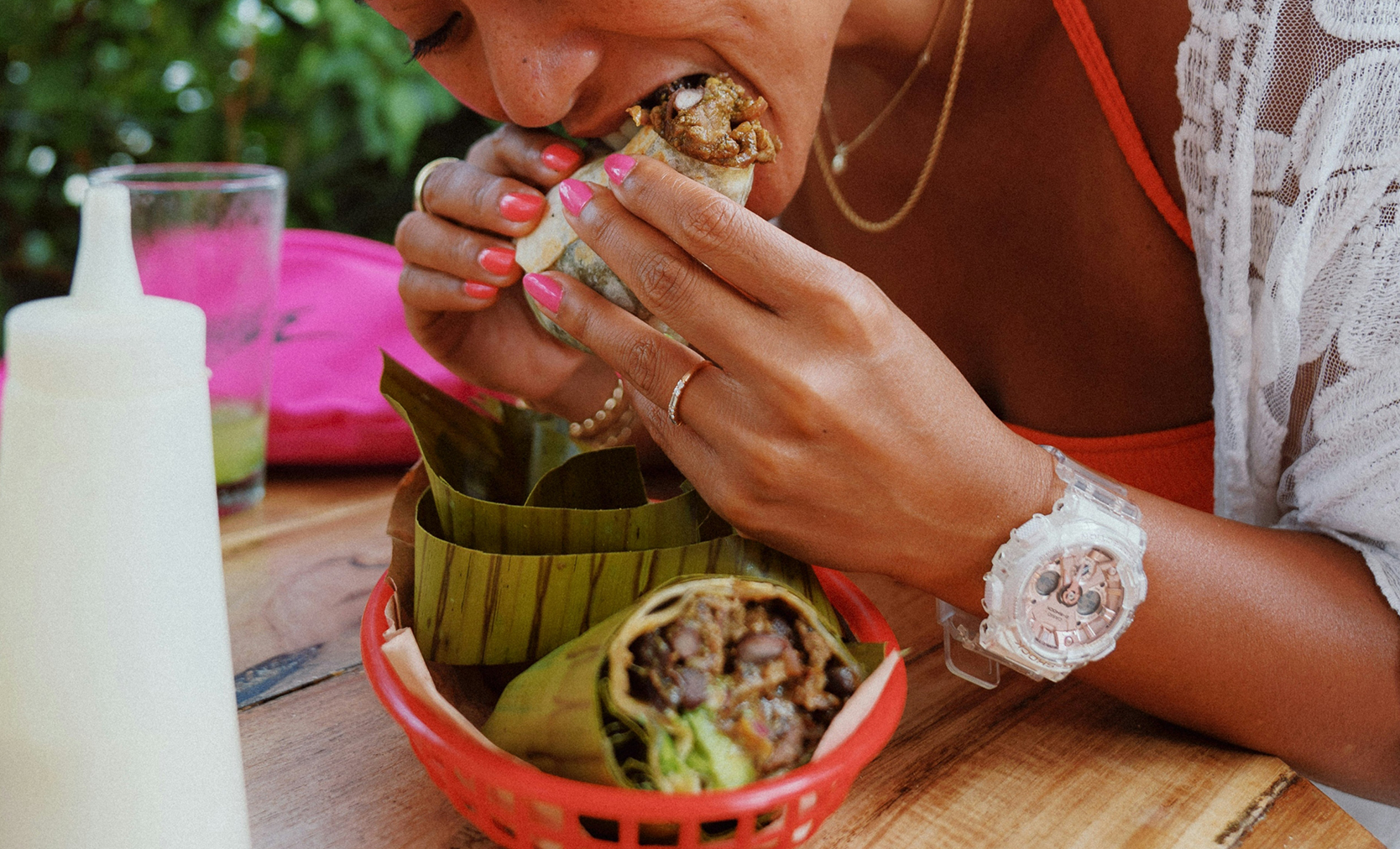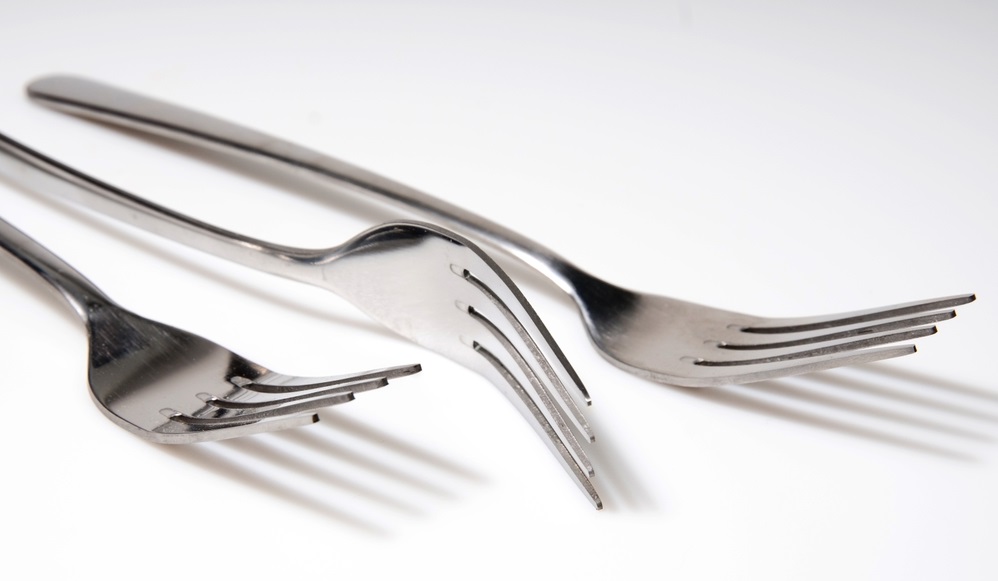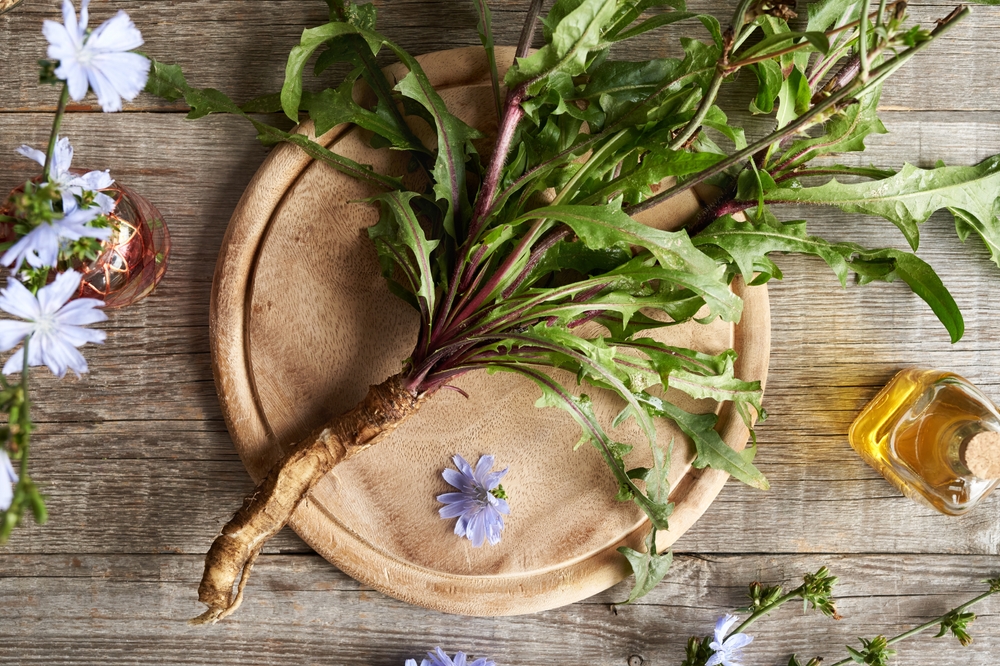Say you’re visiting someone and you’re offered a biscuit with your tea. Oh dear, the packet has already been thrown out – and you are allergic to peanuts. Do you risk it? If Gina Ross’s self-test gets onto the market, there will be an alternative. You follow a couple of steps and wait a moment, and then you know if the biscuit is safe. The only drawback is that your tea has probably gone cold.
Ross’s self-test is a miniature lab. You extract the allergen from the biscuit yourself, carry out an immunoassay and get it assessed by your mobile phone. All this takes just a few minutes and requires no previous laboratory experience or equipment. Ross trialled the system by getting a 15-year-old secondary school student to use it. He passed with flying colours.
Consumers can use the self-test to check for themselves whether food is safe for them.
Immunoassays are tests that make use of antibodies to demonstrate the presence of certain compounds in a sample. That sounds complicated but is actually common practice. ‘Half the population has been using them for years,’ says Ross, referring to pregnancy tests. The coronavirus self-tests that have been developed recently are also antibody based.
Ross developed the allergen test within the European FoodSmartphone project, promoted by the project’s co-ordinator Professor Michel Nielen and co-promoted by Dr Gert Salentijn (Wageningen Food Safety Research and Laboratory of Organic Chemistry). This project explores the potential use of smartphones for food safety through what is essentially a form of citizen science: using self-tests such as Ross’s, consumers can check for themselves whether food is safe for them. ‘That is what appeals to me so much about this project,’ says Ross. ‘It means we are making a kind of decentralized testing system possible.’
Mould
Ross, who was born in London, is not new to immunoassays, having developed one as a student at Bournemouth University. That project came out of an everyday incident. ‘During my final year of undergraduate study I had severe black mould in our student house which made me sick. I found out that it could have to do with mycotoxins. I found this really interesting and this led me to spend my master thesis on the development of an immunoassay for mycotoxins.’
For FoodSmartphone, Ross has developed a test for people to detect peanuts and/or hazelnuts in cookies. She used computer aided design and 3D printing to develop microfluidic devices and an attachment to hold the smartphone that makes it possible to read and interpret the test result in a controlled fashion. The test is also usable without a smartphone though. ‘The test line that appears if there are allergens present is visible to the naked eye. But if you want more information, it’s useful if it’s connected to a smartphone. When you take a photo or video of a developed or a developing strip, you can actually measure the intensity of the test line in comparison to a control line. That makes it possible to quantify allergens: the darker the line, the more allergen is present in the sample.’
Talented people like Gina are rare gems
The technique works: Ross is certain of that. She believes the test to be reliable too. But it will still take a while before her self-test goes into production, her supervisor Michel Nielen reports. ‘Her work has been identified in Horizon 2020 as a “key exploitable result”, with a view to attracting interest in a follow-up.’ But there are a lot of steps involved before that can happen.
Ross took only three and a half years over her PhD. And yet it wasn’t all plain sailing. ‘There were loads of parts where I thought that it wasn’t working, and weeks in which nothing worked and I wondered if I would ever get good results again. The writing went really well and smoothly from the start. I started writing straight away. I had already finished my first paper, a review, during the first year of my PhD. That helped me a lot. And I like working on different things in parallel and doing something new and exciting every day. Science offers you that freedom, with its creative side and the need for out-of-the-box thinking. And that’s what makes science so nice, too.’
Gems
‘Talented people like Gina are rare gems.’ Nielen makes no secret of his admiration. ’Her drive and curiosity are incredible. It’s a treat for a supervisor when a PhD student develops so fast, runs with a project and ends up amazing everyone, even her peer reviewers, with
Antibodies are proteins that defend the body. They bind alien intruders (allergens), thereby deactivating them. In an immunoassay, a line of antibodies for a particular allergen is stuck onto a strip of paper. This is the test line, and a dissolved allergen that passes over it binds to the test line. Another labeled antibody passing over the line binds to the allergen too. The label used in Gina Ross’s self-test are carbon nanoparticles. A single carbon nanoparticle is too small to see, but if there are a lot of them together, they are visible, the test line turns black, and the test is positive. If there is no allergen in the solution, no line appears, and the test is negative.

 Gina Ross. Photo: Guy Ackermans
Gina Ross. Photo: Guy Ackermans 

